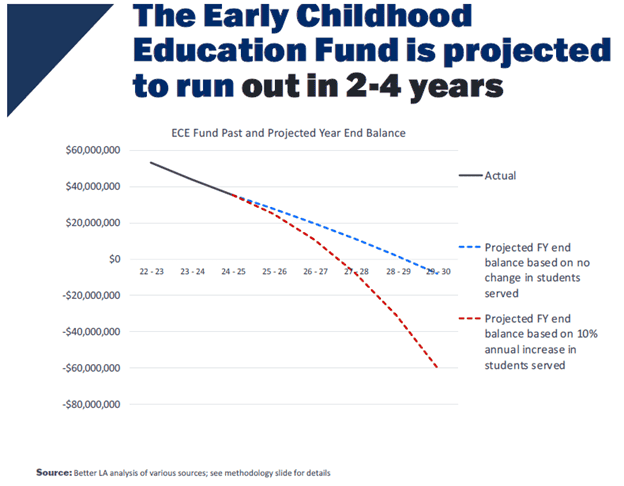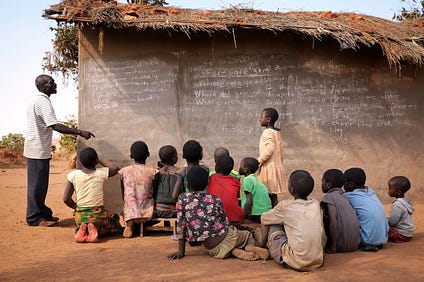Normandy staff knocks on doors to get families enrolled for the new school year – STLPR

Report on Normandy Schools Collaborative’s Initiative to Advance SDG 4: Quality Education
Executive Summary
The Normandy Schools Collaborative has launched a proactive community engagement and policy initiative aimed at increasing student enrollment and attendance. This effort is fundamentally aligned with achieving Sustainable Development Goal 4 (SDG 4), which seeks to ensure inclusive and equitable quality education and promote lifelong learning opportunities for all. The district’s strategies, including a “Back-to-School Walk” and a new online registration system, address critical barriers to educational access and are essential for regaining full accreditation and strengthening institutional capacity, thereby contributing to several interconnected SDGs.
Strategic Actions to Ensure Educational Access and Equity (SDG 4, Target 4.1)
To guarantee that all children in the community can complete a full course of primary and secondary education, the Normandy district has implemented targeted actions to overcome significant challenges. The primary objective is to move from provisional to full accreditation by improving key performance indicators.
- Community Canvassing: Teachers and staff conducted a door-knocking campaign to directly engage with families, encouraging timely student registration. This grassroots effort fosters a partnership between the school and the community, a key component of SDG 17 (Partnerships for the Goals).
- Modernized Registration: A new, mandatory online registration policy was introduced to streamline the enrollment process. This replaces an outdated in-person system that caused significant delays and planning difficulties at the start of the school year.
- Combating Chronic Absenteeism: The initiative directly confronts chronic absenteeism, which is a major impediment to achieving quality education. As noted by Assistant Superintendent Tony Brooks, attendance is directly correlated with academic performance.
Interconnection of Education with Broader Sustainable Development Goals (SDGs 1, 2, 8, 10)
The district’s focus on enrollment and attendance has cascading effects that support broader development goals, highlighting the indivisible nature of the SDGs.
- Resource and Financial Stability (SDG 8: Decent Work and Economic Growth): Chief Financial Officer Carlton Brooks emphasized that enrollment figures are critical for securing adequate funding. Stable funding is necessary to “pay our teachers and educate our children successfully,” ensuring decent work for educators and a robust educational system.
- Logistical and Instructional Preparedness (SDG 4: Quality Education): Washington Elementary Principal Pamela Hollins described the “trickle-down effect” of late registration on resource allocation, including staffing levels, classroom sizes, and materials. Timely enrollment allows the district to provide necessary instructional support and interventions from the first day of school.
- Student Well-being (SDG 1: No Poverty & SDG 2: Zero Hunger): The link between school attendance and student welfare was highlighted. According to district officials, “If students are not in the buildings, they’re not necessarily eating,” underscoring the role of schools in providing essential services like meals that combat poverty and hunger.
- Reducing Inequalities (SDG 10: Reduced Inequalities): By striving to improve its accreditation status, the district is working to reduce educational disparities. The loss of accreditation in 2012 led to an exodus of students, a trend the district is now working to reverse to provide equitable opportunities for all children in the community. The district also extends support to students displaced by natural disasters, ensuring access for vulnerable populations (SDG 4, Target 4.5).
Strengthening Institutional Capacity and Performance Metrics (SDG 16)
The drive to boost attendance and enrollment is a core component of strengthening the Normandy Schools Collaborative as an effective, accountable, and inclusive institution, in line with SDG 16 (Peace, Justice and Strong Institutions).
Key Performance Metrics:
- State Requirement: The Missouri Department of Elementary and Secondary Education (DESE) requires a 90% attendance rate for a school to remain in good standing.
- Current Performance: The district’s attendance rate improved to approximately 85% by the end of the last school year, credited to increased family communication.
- Identified Gap: Despite recent gains, the proportional attendance rate was approximately 50% in the 2023-24 school year, according to DESE data, indicating a significant challenge remains.
By systematically addressing the root causes of low enrollment and absenteeism, the Normandy Schools Collaborative is not only working toward its own institutional goals but is also making a tangible contribution to the global agenda for sustainable development.
Which SDGs are addressed or connected to the issues highlighted in the article?
-
SDG 4: Quality Education
- The entire article focuses on the Normandy Schools Collaborative’s efforts to improve educational outcomes. Key issues discussed include boosting student enrollment, increasing average attendance, combating chronic absenteeism, and regaining full accreditation. These actions are central to providing quality education. The superintendent’s statement, “It’s important that we maximize our attempts to make sure we get kids in the seats the first day… so we can start early on with any kind of instructional support, interventions,” directly links attendance with the quality of educational support.
-
SDG 10: Reduced Inequalities
- The article highlights inequalities in educational access and quality. The district’s unaccredited status allows families to send students to other districts, creating an unequal system. The article notes, “The district saw a drop in enrollment after it lost its accreditation in 2012.” By working to regain accreditation and increase enrollment, the district is attempting to reduce this inequality and ensure that children within its boundaries have access to a quality, local education. The effort to support students displaced by a tornado also addresses inequality for children in vulnerable situations.
-
SDG 1: No Poverty
- The article connects school attendance to basic needs, which is often a challenge for families experiencing poverty. The assistant superintendent states, “If students are not in the buildings, they’re not necessarily eating.” This implies that the school provides essential services like meals, linking educational access to poverty alleviation. The door-knocking campaign is a direct effort to reach potentially vulnerable families and ensure they can access these basic services.
-
SDG 11: Sustainable Cities and Communities
- The “Back-to-School Walk” is a community-level initiative designed to strengthen the local school system, which is a basic service essential for a sustainable community. The article describes staff going “door knocking… in the neighborhood” to engage directly with families. Furthermore, the district’s offer to enroll “students that were displaced by the May 16 tornado” shows a commitment to community resilience and ensuring inclusive services for all residents, especially after a disaster.
What specific targets under those SDGs can be identified based on the article’s content?
-
SDG 4: Quality Education
- Target 4.1: By 2030, ensure that all girls and boys complete free, equitable and quality primary and secondary education. The district’s core mission described in the article—boosting enrollment and attendance for elementary and other school levels—is a direct effort to achieve this target. The goal to “regain full accreditation” is a measure of improving the quality of that education.
- Target 4.2: By 2030, ensure that all girls and boys have access to quality early childhood development, care and pre-primary education. The article mentions that the enrollment of “About 3,000 students, including preschool, attended Normandy,” indicating that the district’s efforts include providing access to pre-primary education.
- Target 4.5: By 2030, eliminate gender disparities in education and ensure equal access to all levels of education… for the vulnerable… and children in vulnerable situations. The district’s explicit offer to “receiving any students that were displaced by the May 16 tornado” directly addresses this target by ensuring access for children in a vulnerable situation.
-
SDG 10: Reduced Inequalities
- Target 10.2: By 2030, empower and promote the social, economic and political inclusion of all. The district’s efforts to improve its accreditation status and bring students back from other districts is an action to promote social inclusion and provide equal educational opportunities within the community, counteracting the educational drain caused by its unaccredited status.
Are there any indicators mentioned or implied in the article that can be used to measure progress towards the identified targets?
-
Indicators for SDG 4 (Quality Education)
- School Accreditation Status: The article repeatedly mentions the district’s goal to “regain full accreditation.” Its current status as “provisionally accredited since 2017” and its loss of accreditation in 2012 serve as key performance indicators of educational quality.
- Enrollment Rate: The district’s push to “boost enrollment” is a central theme. The figure of “About 3,000 students” in the 2024-25 academic year serves as a baseline indicator.
- Attendance Rate: The article provides specific data points that serve as indicators, such as “Normandy’s attendance rate was at about 85% at the end of this school year” and the state requirement that “90% of students show up 90% of the time.”
- Chronic Absenteeism Rate: This is explicitly defined and measured. The article mentions the problem of chronic absenteeism, defined as when “a student misses more than 10% of school.” This is a direct indicator of student participation.
- Proportional Attendance Rate: A specific metric is cited from the Missouri Department of Elementary and Secondary Education (DESE): “The district’s proportional attendance rate was about 50% in the 2023-24 school year.” This is a clear indicator used to track progress.
-
Indicators for SDG 10 (Reduced Inequalities)
- Enrollment of Vulnerable Students: The number of students enrolled who were “displaced by the May 16 tornado” can serve as an indicator for the district’s success in providing access to education for children in vulnerable situations.
SDGs, Targets, and Indicators Analysis
| SDGs | Targets | Indicators Identified in the Article |
|---|---|---|
| SDG 4: Quality Education | Target 4.1: Ensure all children complete free, equitable and quality primary and secondary education. |
|
| SDG 4: Quality Education | Target 4.2: Ensure all children have access to quality pre-primary education. | Inclusion of preschool in total enrollment figures. |
| SDG 4: Quality Education | Target 4.5: Ensure equal access to all levels of education for the vulnerable. | Enrollment of students displaced by the tornado. |
| SDG 10: Reduced Inequalities | Target 10.2: Empower and promote the social inclusion of all. | Efforts to reverse the drop in enrollment caused by loss of accreditation and provide equal local schooling options. |
| SDG 1: No Poverty | Target 1.4: Ensure access to basic services for the poor and vulnerable. | The implied provision of meals at school, linked to attendance (“If students are not in the buildings, they’re not necessarily eating.”). |
Source: stlpr.org

What is Your Reaction?
 Like
0
Like
0
 Dislike
0
Dislike
0
 Love
0
Love
0
 Funny
0
Funny
0
 Angry
0
Angry
0
 Sad
0
Sad
0
 Wow
0
Wow
0



























;Resize=805#)



















































